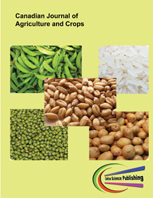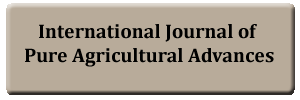Soil Physico-Chemical Properties in Three Land Use Systems (Theobroma Cacao, Gmelina Arborea and Secondary Forest) in Umuahia North of Abia State, Nigeria
DOI:
https://doi.org/10.20448/803.1.1.19.29Keywords:
Physicochemical, Properties, Land use systems, Abia State.Abstract
A study was conducted in three land use systems (Theobroma cacao, Gmelina arborea and secondary forest) in Umuahia North of Abia State of Nigeria to determine the contribution of the land use to the soil physicochemical properties. Three profile pits per land use type were dig and used to study the soil physical and chemical properties. Results of the soil analysis were statistically analyzed using Analysis of variance (ANOVA) test at p<0.05 to determine how the values for the soil characteristics differed from one another across the land use types. Least significance difference (LSD) at p<0.05 was applied to separate difference between means values of three different land use systems. The texture of the soils was predominantly sandy loam particularly in the surface layers. The soil pH generally declined (i.e. becoming more acidic) from the topsoil to underlying layers. T. cacao had the highest organic level in all the layers investigated compared to other land use followed by G. arborea. Total N was higher in G. arborea followed by T. cacao for all the horizons. The levels of average. P, Ca2+, and Mg2+ were higher in secondary forest followed by that of G. arborea plantation for all the horizons. T. cacao plantation had significantly highest copper (Cu) distribution and the least iron (Fe) distribution. Alumininium (Al) was found in trace amount in the three land use systems. Nutrient distribution seemed to be affected by management practices in each land use types. Some soil properties were significantly different in the three land use types while most soil properties in G. arborea and secondary forest were not statistically different (p<0.05) exchangeable Al. In the T. cacao plantation, Cu contents were significantly and positively correlated with organic carbon and Ca2+. Al was also significantly, but negatively correlated with K+ and Na+. In G. arborea, weak correlation relationships were obtained between Fe and N, average P and a negative correlation with Al. In secondary forest, iron correlated negatively with silt and clay soils.


